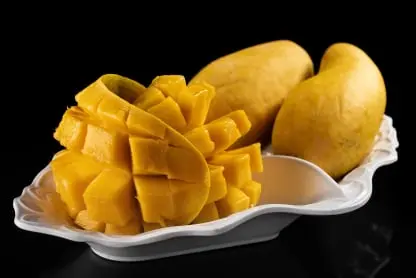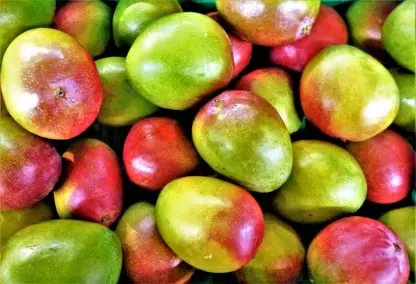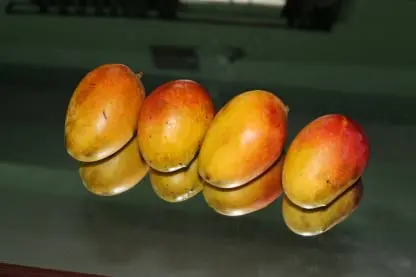Mango packing app:
Mango packing: for fresh mango packing, orders, sales, traceability, QC and shipping mangoes. Mango packing management for value adding, export, and mango quality inspection. Mango packing app for easy, fast, and efficient mango packing for fresh mango, dried, mango pulp, mango juice. Reduce mango waste, increase mango traceability. Fill every order order accurately.

Mango Packing App for accurate order filling & production
View Packing App Specifications.
Mango packing & mango processing quality control solution
Mango packing & mango processing quality control
Mango packing solution guides employees to use best mango handling practices to enhance traceability, reduce mango waste during mango processing, mango product manufacturing, and mango packing.
The farmsoft team has released a suite of Mango packing software solutions for processing, sorting, and grading of avocado and avocado value added manufacturing. The farmsoft Mango Packing solution is designed for all sizes of pack-houses and pack sheds, and includes extensive quality control solutions based on mango quality requirements. Additional features for mango packers also include specific labeling requirements, with special label compliance for Australia, New Zealand, USA, and Canada, Africa, Turkey, Egypt with and PTI, CanGAP, EuroGAP, and more. Contact us to find out more about avocado farming, and avocado processing today.
West African mangoes on the European mango market: towards a very positive 2020
On a demanding European market affected since March by COVID-19, following Côte d’Ivoire at the beginning of the campaign, Mali and Senegal also show very encouraging results, reflecting the efforts of the entire sector.
In recent years, there have been numerous and recurrent interceptions of mangoes imported into Europe due to the presence of fruit fly. With the European Union’s revision of its phytosanitary regulations, a new European directive came into force on 1 September 2019, imposing additional requirements on all countries exporting mangoes to the EU. As part of the intra-ACP Fit For Market SPS programme, funded under the 11th European Development Fund, ColeACP is supporting ACP and particularly West African National Plant Protection Organisations (NPPOs) in complying with these stricter phytosanitary measures. It is the responsibility of the NPPOs to respond to the phytosanitary regulations by drawing up and submitting to the EU a national action plan to limit the phytosanitary risk linked to the import of mangoes into the EU, prior to any mango exports.

Mango packing app manages food safety
Only one lot of mango intercepted during the Mali campaign
One example of success is the historically low number of interceptions of Malian mango lots in Europe during the 2020 campaign: only one lot was intercepted. This represents a remarkable improvement compared with previous years. We would like to congratulate all our partners in Mali for this success: the National Directorate of Agriculture, the National Plant Protection Organisation, the Interprofession de la filière mangue du Mali, along with the entire private sector, local experts, and other mango packing programmes that have contributed to this result. More than 12,500 tonnes were exported from Mali this year, including nearly 3,000 tonnes by road. Our support to the relevant authorities will continue to maintain this situation and support them in the face of new challenges they may face in the future. Like Mali, Côte d’Ivoire had very few fruit fly-related notifications on entry to the EU market: only four compared with 15 last year. In Senegal, the initial signs are also positive in terms of the quality of products that have been marketed in the EU: the campaign is currently ongoing, and there have so far been no interceptions linked to fruit flies.
Harvesting and packing
The proper time to remove a fruit from the tree or plant varies with each fruit and is governed by whether the product will be sold and consumed within hours, or stored for weeks, months, or even a year. Most fruits are harvested as close as possible to the time they are eaten. A few, of which banana and pear are outstanding examples, may be harvested while immature and still ripen satisfactorily. Orange, grapefruit, and some varieties of avocado may be “stored” on the tree for several months after they have attained good quality; this method cuts costs in handling and marketing.

Mango Packing App for reduced food & fresh produce waste
MANGO PACKING PROCESS
Mangoes belong to the sumach family (Anacardiaceae) and were first cultivated in India some 4000 years ago. Together with the pineapple, they are considered the most delicious of tropical fruits and they have the highest vitamin A content of any fruit. The many different varieties mean that they vary greatly in shape, color, size and weight. A mango may be oval, roundish, elongated or kidney-shaped; it may be green, green-yellow or even orange to red in color. The length of the mango is up to 25 cm, its maximum width 10 cm. The heaviest mangoes weigh up to 2 kg.
The delicious mango yellow to orange colored flesh, which constitutes 60 – 70% of the fruit, is located under the thin, inedible outer skin. Fibers join the flesh to the large, egg-shaped white stone inside, so explaining the difficulty of removing the stone from the flesh. Mangoes are harvested when unripe (at the preclimacteric); they must still be green and firm-fleshed. Harvesting is done by hand or using special fruit picking poles. The greatest possible care must be taken with harvesting as even the smallest of cracks results in rapid spoilage by rotting.

Mango packing app manages supplier food quality and traceability
At the time of harvest, the mangoes must be capable of post-ripening, as they will otherwise not reach optimum quality. Post-ripening may be accelerated by temperatures of 25 – 30°C and treatment with ethylene. Once harvested, any exuding latex is cleaned off and the mango is treated with hot water and fungicides in order to extend the relatively short storage life.
MANGO PACKING TECHNOLOGY
Mango packaging (fresh fruit and processed products), in the light of current and best practices in the global mango industry, as well as its future research directions. Harvested mangoes go through de-sapping, washing, sizing, and grading prior to packing. The major intelligent packaging systems are time-temperature indicators/time-temperature biosensors, leak detectors, ripeness and spoilage indicators, and radiofrequency identification labels. Such indicators can be used for mangoes and mango products to enhance product reliability. Minimum label information for most of the domestic wholesale markets in developing countries include the cultivar, class (local criteria), gross weight, and grower/suppliers name. Frozen mangoes are packaged in flexible pouches of retail and bulk sizes, while dried mangoes are mostly packaged in individual-serving size bags. Active packaging with antimicrobial properties is extensively used for processed food products to reduce spoilage and contamination.